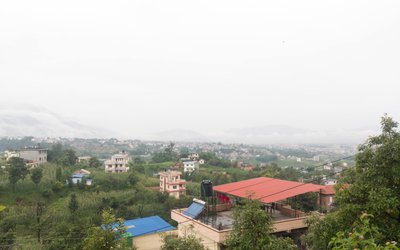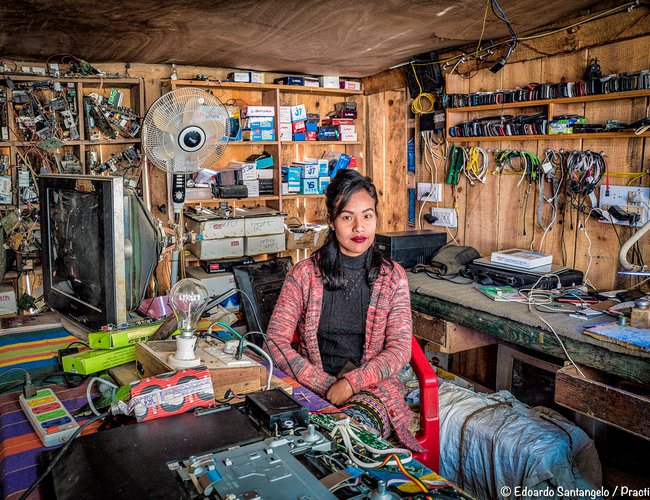
With the supply of reliable, affordable and quality electricity through NEA’s grid, many parts of rural and remote Nepal have seen a transformation, particularly visible among women, who have started to work in once male-dominated enterprises like maintenance of electrical equipment, such as radio and mobile phone.
The recent tariff amendment providing up to 10 units of electricity free of cost can increase the access to electricity of marginalized communities. Similarly, the subsidy given in the electricity consumed for irrigation has also encouraged women to move to the commercialization of agriculture, in growing off-season vegetables.
Following the approval of new tariff by the Tariff Fixation Commission (TFC), after holding a public hearing and ensuring the participation of various stakeholders, certain changes have already come about. In that sense, the decision is a major breakthrough.
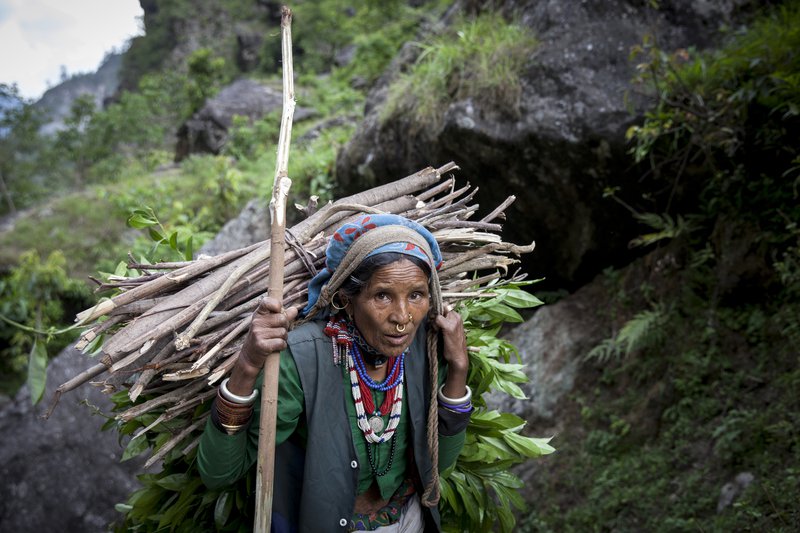
An elderly from western Nepal bring back home some firewood for cooking. Practical Action/Kishor Sharma
However, there is still a long way to go to improve the total energy supply and make all the kitchens smoke free, thereby, improving the health conditions of women and their livelihood. Similarly, the participation of marginalized communities, women and community-based organizations also need expansion.
Although providing up to 10 units of electricity is a good beginning to increase the access of electricity for light for certain hours, it is not enough to bring down the use of traditional sources of energy. According to data, there are still over 68% of households using traditional biomass as a source of energy.
This is one of the major reasons behind discrimination and burden for women as they have to spend a lot of time to collect the firewood for fuel, bearing economic and health costs.
Realizing the importance of energy, the government has linked its vision Prosperous Nepal, Happy Nepali with electricity, announcing 2018-2028 as the Energy Decade, aiming to increase access to electricity for 99 percent of the population by 2030. The government also plans to increase per capita electricity to 1500 kilowatt and reduce the use of fuelwood and import of energy while promoting inclusive access to energy as its priority.
However, the current structure cannot displace the traditional energy sources in cooking and increase per-capita consumption in rural areas. This means the overwhelming majority of rural women have to cook food in kitchens full of health hazards.
Inclusive Process
Over the decades, there used to be a monopoly of Nepal Electricity Authority, a power utility, in fixing the tariff and planning for distribution. The role of the dissolved Tariff Commission was just to endorse the tariff proposed by the utility without any amendment.
For the first time, the TFC chose to follow an inclusive, accountable, transparent and participatory process in fixing the new tariff.
Despite so many shortcomings and lapses, the process followed during fixing tariffs and some of the initiatives are very significant and important to ensure the participation of community groups, women and marginalized groups in the process. While the process was still limited, the new tariff is fixed with the participation and voices of different stakeholders in a transparent and accountable method.
With the formation of TFC, a regulatory authority, a new chapter has begun with full legal right to take the decisions on electricity tariffs. With the technical support from various national, international organizations and voices of community institutions, consumers and other stakeholders, TFC has recommended the new tariff.
Although the new tariff does not address all the concerns of small consumers like women and marginalized communities and community-based distribution institutions like CREEs and their umbrella association National Association of Community Electricity Users Nepal (NACEUN), the TFC has practiced a new approach following a broad and intensive consultation on NEA’s proposed tariff structures.
Although the lockdown imposed by the government restricted the mobility of people and holding a public hearing, the commission used the internet, telephone, message, voice recording and other tools to ensure the participation of community, women and marginalized groups. It has disseminated all the documents and shared the discussion through its website for the public. In this way, TFC has shown its willingness to be transparent and accountable.
“Unlike in the past, NEA’s proposal for tariff revision was widely circulated for consultation and discussion among various groups, including community distribution groups, women and marginalized groups. We disseminated all the information regarding the new tariff and decided new tariff incorporating the views of women and marginalized groups,” said Dr. Ram Prasad Dhital, member of the Commission. “This is for the first time such a wide and broad consultation has taken place to fix tariff. To ensure participation of community, women and marginalized groups, they were given enough time to express their views.”
Long Way
Not only in fixing tariffs, but there is also the need to engage the community, especially the marginalized community and women groups in the expansion of grid and distribution. As the structures of tariff determine the use of energy at the household level, ensuring the participation of community groups is highly important. If the electricity is distributed in a reliable manner and for affordable tariff, the rural population can use the energy extensively, including in cooking and small enterprises.
The current tariff rates provide 10 units of free electricity for poor and marginalized groups. However, it will still be costly to cook food on induction heaters for the poor. More flexible and affordable tariff rates can encourage urban households to use induction. Given the current tariff, economic affordability is still the issue for rural women and marginalized groups.
“This is just the first step. We just looked at one or two aspects. The next will be broader and different. As the priority of the government is to expand the access of electricity to displace import, the commission will completely accommodate the voices and concerns of community groups, women and marginalized people,” said Dr. Dhital, who has long experiences of working in the alternative energy sector, including in the position of the Executive Director of AEPC.
As the lockdown imposed by COVID-19 had badly affected the process of broader consultations and extensive participation of the marginalized groups and women, this year’s process set a new precedent.
Role of CREEs
Although Nepal Electricity Authority generates its large sum of revenue from a small section of industrialist consumers and urban consumers, Community Rural Electricity Entities (CREEs) and their umbrella association National Association of Community Electricity Users Nepal (NACEUN) are pillars to increase access to electricity in the country.
Given its network at the grassroots level, the Nepal government’s target to increase access to electricity to all as propounded by the Social Development Goal of 2030 is impossible without the engagement of CREEs and NACEUN. As the revenue generated through CREEs is relatively small compared to others, NEA’s bulk of customers are under this group. For this, NEA proudly claims all the success of increasing electrification.
A report analyzing the proposed electricity tariff and its implication on the operation of Community Rural Electricity Entities (CREEs) prepared by energy expert Vishwa Bhushan Amatya for Practical Action Nepal Office showed that 300 CREEs are in operation serving more than 500000 households.
While the role of CREEs in expanding the grid electrification, together with reducing non-technical losses and creating local employment, is well recognized their sustainability has always been a question.
The report says that many of the CREEs are in a very bad financial shape. Only a few of them seem to balance their income and expense.
“The apprehension whether CREEs will further face the financial brunt due to new proposed domestic tariff that CREEs are supposed to collect from its customer and bulk tariff proposed for CREEs is not fully understood and warrants an analysis. This is specifically more evident as the new tariff proposed zero energy tariffs to customers consuming less than 10 kWh of electricity. Consequently, about half of CREEs customer belongs to this group,” reads the report.
After the announcement of the new tariff, there is a growing concern about the financial aspect and the sustainability of CREEs. “We have already expressed our concerns about the change in tariff proposed by NEA and financial parts. The process the tariff went through was a major achievement. However, the recent tariff will have a negative implication on the business and long-run sustainability of CREEs, which are the backbone to supply electricity to the poor, marginalized groups. Electricity tariff needs to be revised considering CREE’s sustainability as a micro utility,” said Narayan Gyawali, chairman of NACEUN. “NEA must readjust the tariff exempting 10-unit consumption of electricity by each of our members.”
“The free electricity up to 10-unit consumption is a major achievement of present tariff structures. This will support around 800,000 consumers of NEA. However, the current tariff will likely have a negative effect on the CREEs income and sustainability. All the members of CREEs are customers who are in the bracket o 10 units. As we are purchasing electricity in bulk from NEA for the distribution, NEA should exempt 10 units. At a time when the overhead cost is already high and many CREEs are facing financial trouble, the present unclear clauses of NEA will further damage CREEs,” said Gyawali.
Practical Action
Practical Action-Nepal has been focusing on energy as an agent for transformation. In Nepal, it has been supporting people to harness the transformational power of clean, affordable energy and to reduce avoidable deaths caused by smoke from indoor stoves and fires.
Since its establishment in Nepal, Practical Action has been supporting the construction of micro-hydro, improved cooking stoves, solar and wind power for off-grid region focusing to increase access to energy to marginalized communities and for women’s empowerment.
Through its advocacy program, Practical Action-Nepal has been also been launching various programs including safety and health aspects at the grassroots level, supporting to strengthen CREEs institutional capability and providing technical support to regulatory and energy-related institutions.
“We have been working closely with community, CREEs and TFC providing necessary support. We conducted a study on the first tariff presented by NEA. Had it been implemented, it would have a more damaging effect on the community. The early draft was bad compared to the recent one. We also gave recommendations for the commission. They had not accepted all our recommendations but they incorporated our points in fixing the tariff,” said Head of Energy Program at Practical Action, South Asia Regional Office.
With an aim to bring rural communities, energy service providers and decision-makers together to put sustainable, clean energy solutions to work for the people who need them the most, Practical Action has recognized Community Rural Electricity Entities (CREEs) and their umbrella association National Association of Community Electricity Users Nepal (NACEUN) as important agents to facilitate affordable and reliable electricity supply for productive use of electricity and electric cooking.
Consultation process
Given its past practices to endorse the proposed tariff submitted by Nepal Electricity Authority, the Tariff Fixing Commission (TFC) took a very different path to ensure the participation and engagement of concerned stakeholders.
“There is still a long way to go. But what we have achieved this year is the ending of the monopoly of utility to decide tariff unilaterally without participation and engagement of the consumer,” said Dilli Ghimire from Nepal Energy Foundation. Due to lockdown, we were unable to discuss face to face, on a large scale, in the public hearing but TFC invited representatives from CREEs and women. It is good to see 10-unit of free electricity given to the poor and marginalized population but they don’t talk much about community-based institutions which are distributing the electricity, purchasing the bulk energy from NEA.”
The TFC published the tariff through its website for discussion. The Commission also discussed the proposed tariff of NEA and sought clarifications and points to prove its demand to adjust the tariff.
They consulted various aspects of the tariff with institutional level with FNCCI, CNI, NACEUN and other international development partners including The World Bank, USAID and Practical Action.
They consulted about the rationale and ground for fixing the new tariff and secured technical guidelines, learning from the process adopted in different countries of the world.
As a regulator, the commission listened to NEA’s concerns, including its economic strength, as well as with the concerned stakeholders, particularly consumers. After this, they took the decision.
“For us, it was quite a difficult time to convince all stakeholders. We held a series of meeting with NEA seeking the justification for their proposed tariff. We studied all the previous three years’ financial reports of NEA. Similarly, we invited representatives from FNCCI, CNI, NACEUN and community groups. We took the decision looking at the government policies, the economic health of NEA and communities’ affordability,” said Dr. Dhital.
“We are convinced that without increasing the access to electricity in rural areas we will not be achieving inclusiveness. Thus, the commission is determined on the need to provide free electricity to the marginalized communities and subsidy for women-run small and micro enterprises, including agriculture. As the tariff proposed by NEA focused on its largest revenue customers but it had nothing for the largest numbers of small customers from rural areas. As we are concerned about equitable distribution, we invited all three voices and took a middle road to give 10-unit free electricity and subsidy in irrigation,” said Dhital. “The commission made public all the proceedings and discussions through its website in a transparent manner.
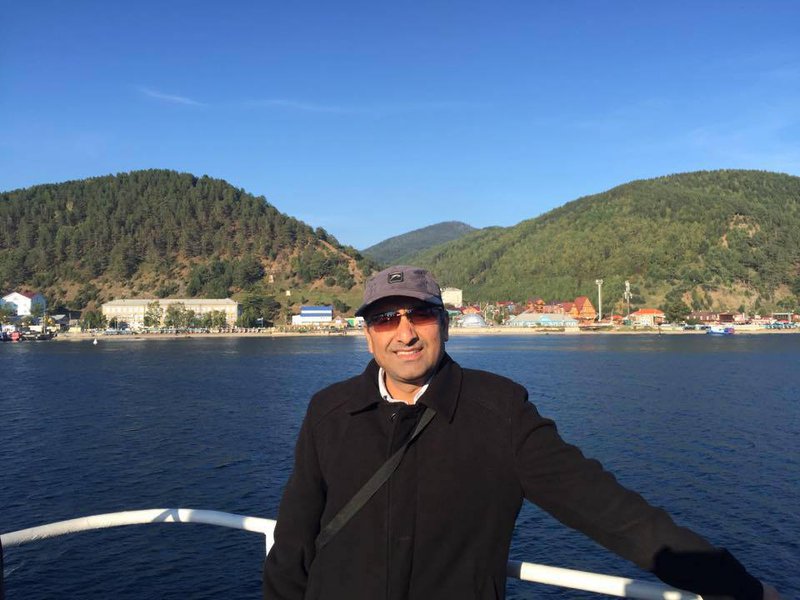
TFC Member Dr. Dhital
“Our plan was to hold the public hearing and consultations visiting all seven provinces. Our mobility and face to face interaction were restricted due to COVID-19. Despite all these I can claim the new tariff structure was announced while maintaining transparency, accountability in the process and ensuring the participation of all stakeholders,” said Dr. Dhital. “We received the technical support and advice from The World Bank, USAID and Practical Action to formulate the design. Similarly, Community Rural Electricity Entities (CREEs) and women groups gave us their recommendations. We have also consulted with private sectors, including FNCCI, CNI and IPAN.”
Despite their participation in the tariff fixation process, the voices of CREEs, women and marginalized communities are yet to be fully reflected on the new tariff. “This is an achievement as 800,000 consumers representing poor and marginalized groups will receive free electricity up to 10 units. For the community organizations like ours which purchase bulk electricity from NEA, it remains to be seen how NEA can compensate us,” said Gyawali, chairman of the National Association of Community Electricity Users Nepal (NACEUN).
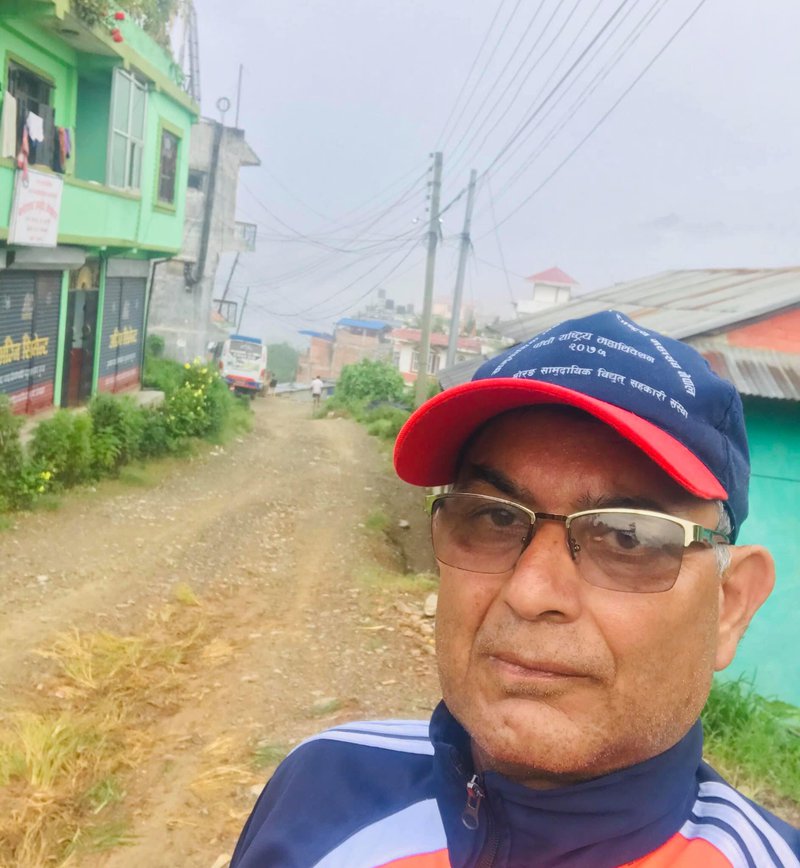
Chairman of NACEUN Gywaali
Gyawali’s opinions have some valid reasons as many of the CREEs out of 300 existing are in a very bad financial shape. Only a few of them seem to be able to balance their income and expenses.
Another of this year’s success was to amend the original tariff proposed by NEA. With the pressure from community-level organizations, NEA was forced to make many amendments during the consultation process.
Although the process of change was minimal, the precedents set this time were remarkable for the coming years.
With the support from Practical Action, Analysis of the proposed electricity tariff and its implications on the operation of Community Rural Electricity Entities (CREEs) was conducted and it was handed over to the Commission. Had the first proposed tariff been endorsed, CREEs would have to face a more difficult time.
“The commission has not completely accepted recommendations of all our analysis but they took our several recommendations in announcing the new tariff,” said Pooja Sharma, Head of Energy Program at Practical Action, South Asia Regional Office.
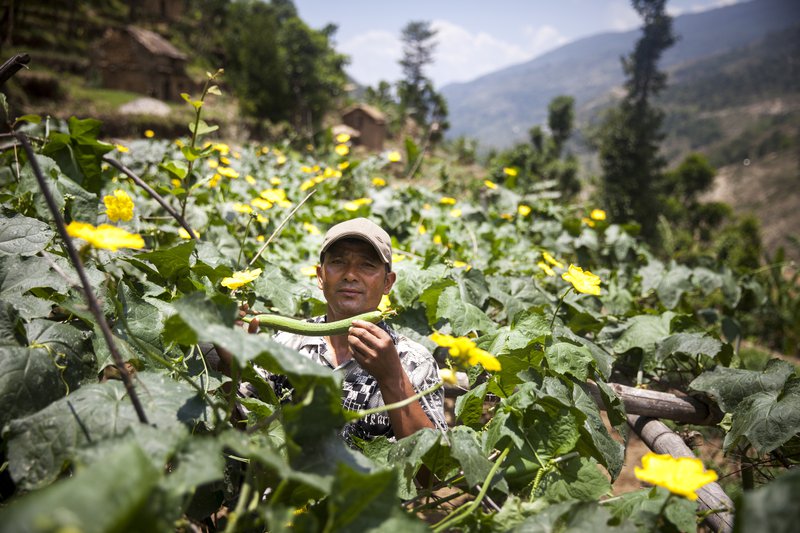
Better livelihood means a better future for the family and an entire generation to come. Practical Action/Kishor Sharma
In PPOE, we are saying inclusive does not only mean individuals but also institutions. We also focus on the community level organizations which have been part of electricity distribution at the community level. There are several Communities Rural Electricity Entities (CREE), which have been distributing the electricity where there is no reach of NEA.”
They have good impacts at the local level but they are in minority in terms of their contribution to NEA’s revenue compared to big industrial houses.
Access to energy is the key to social and economic transformation. It is equally important for the participation of community organizations to ensure quality supply in the affordable tariff.
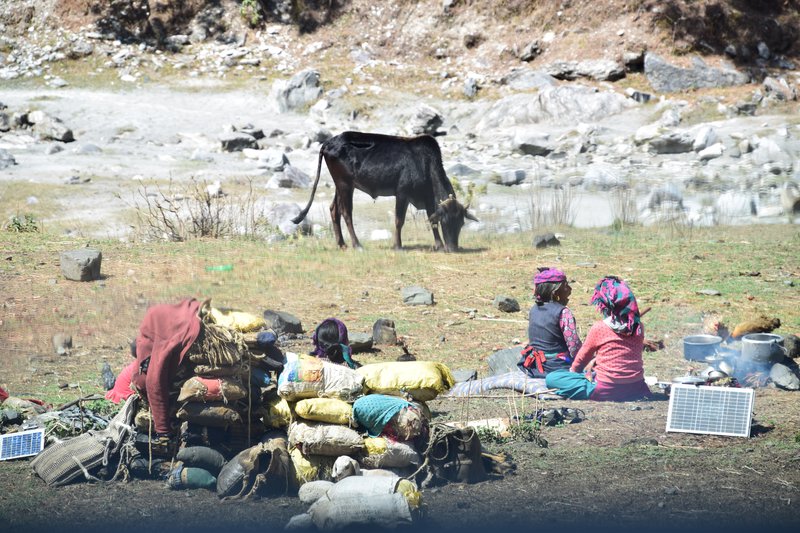
Nomads of Achham returning back homes after passing a long winter in low lands selling livestock depend on portable solar panels for energy supply. Practical Action/Archana Gurung
PPEO
The Poor People’s Energy Outlook series (PPEO) was launched in 2010 to shine a light on energy access from the perspectives of the poor. The series challenges the energy sector’s focus on energy resources, supply and large scale infrastructure projects; emphasizing instead that it is energy services which matter most to poor people, and that decentralized approaches are the best way to achieve universal energy access.
Poor People's Energy Outlook (PPEO) 2019 is the culmination of five years’ research, exploring what it takes to realize the kinds of energy services that enable people living in energy poverty to thrive. The report compiles and updates key messages and recommendations on energy access planning (PPEO 2016), financing (PPEO 2017) and delivering at scale, while also leaving no one behind (PPEO 2018).PPEO Link
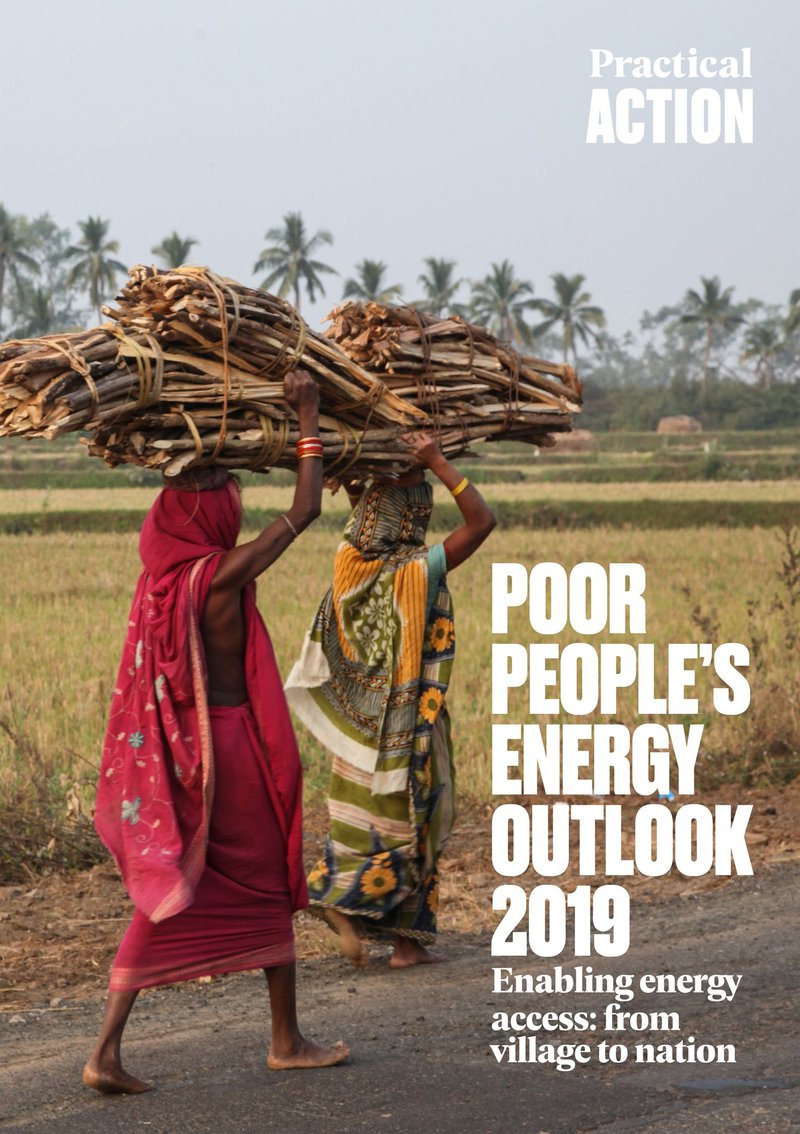
It draws on primary research from community consultations in Bangladesh, Kenya and Togo, as well as analysis of energy access programs across Latin America, South Asia and sub-Saharan Africa; considering how to ramp up energy access from small-scale interventions to national and global levels, to ensure that, with just a decade to go until our SDG7 deadline, the transformational power of energy is universally enjoyed.
The partnership with development organizations has helped develop these demand-side approaches and gender mainstreaming.
The idea is to invest in building the skills and experience of energy SMEs and future leaders, including supporting and empowering women.
Despite progress on certain fronts, the world is not on track to achieve universal energy access by 2030. At current progress rates, 650 million people will still lack electricity access by the end of the next decade. As the latest tracking report for Sustainable Development Goal 7 (SDG7) highlights, the outlook for clean cooking is even less promising, with over 2 billion people – mostly women – still expected to continue relying on inefficient stoves using dirty fuels. Along with health damage and gender imbalances, insufficient energy access means fewer business opportunities.
Many communities, consequently, will not be able to lift themselves out of poverty and create better lives and futures. Policymakers should note, however, that SDG7 is still achievable.
More finance is needed, especially for decentralized renewable energy to serve communities off the established power grid. In recent years, off-grid renewable energy solutions, including both stand-alone systems and local mini-grids, have emerged as a mainstream, cost-competitive option to expand electricity access.
Over the past three years, Practical Action’s Poor people’s energy outlook has considered planning, finance, and deployment opportunities that can help to meet the needs of vulnerable people, women, and the poorest, most remote communities. Based on a rich selection of case studies, the analysis draws on the organization’s direct experience with energy access programs that place the priorities and perspectives of energy-poor communities at the heart.
In Nepal lack of access to modern energy services represents a pressing problem in the rural areas, particularly for women. According to a series of reports published by various programs, large numbers of women served by health facilities without electricity, and 99 percent of all deaths in childbirth occur with poor health facilities.
Many poor women spend much of their time on menial work that could be performed much more easily if energy were available, and safety concerns often prevent women from going out at night where there are no streetlights.
Children suffer too – for the children living in remote parts of Nepal, primary schools lack electricity, and this can lead to markedly worse educational outcomes.
Integrated energy planning is key now. This includes grid and off-grid integration. Currently, there are separate regulations for both. The commission is just looking for a grid, not off-grid.
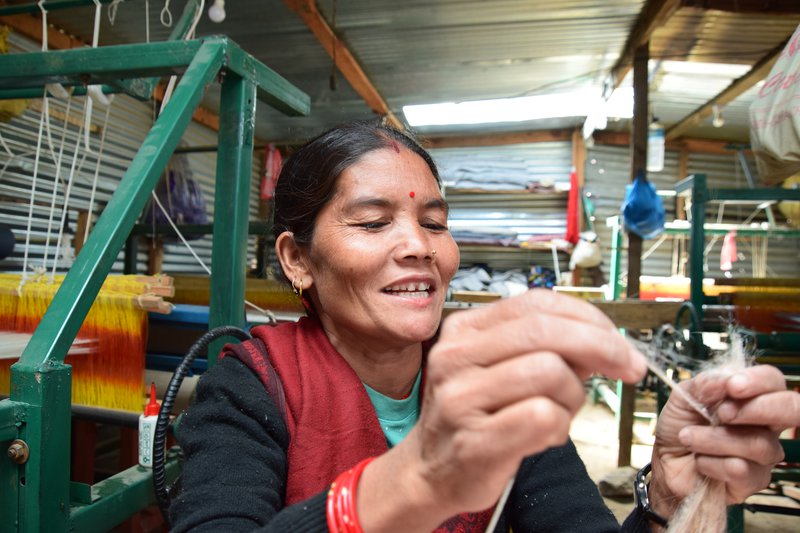
Right skills need energy interventions to convert them into scalable ideas and ventures. Practical Action/Archana Gurung
The current tariff though has much support to promote clean cooking and contribute to women’s health. How can current electricity access and tariff benefit women? Mini-grid includes solar and micro-hydro. How can we use them in dedicated productive use or enterprise?
There is a need to go for synchronization. Access to modern energy services might be improved through, among other approaches, establishing small-scale hydroelectric projects, facilitating the use of home solar systems, or providing grid electricity.

Keshab Poudel
Poudel is the editor of New Spotlight Magazine.
- HELVETAS NEPAL’S RIVERBED FARMING: Shift From Overseas To Local Farming
- Jul 26, 2024
- POLITICAL SCENARIO : K.P. Sharma Oli's Resurgence
- Jul 21, 2024
- UNDP/MinErgy: An Inventive Approach To Clean Brick Kiln
- Jul 19, 2024
- HELVETAS NEPAL: Nutrition Through Riverbed Farming
- Jul 18, 2024
- NOU Opens To All: Dr. Shilu Manandhar Bajracharya, Vice Chancellor
- Jul 15, 2024












